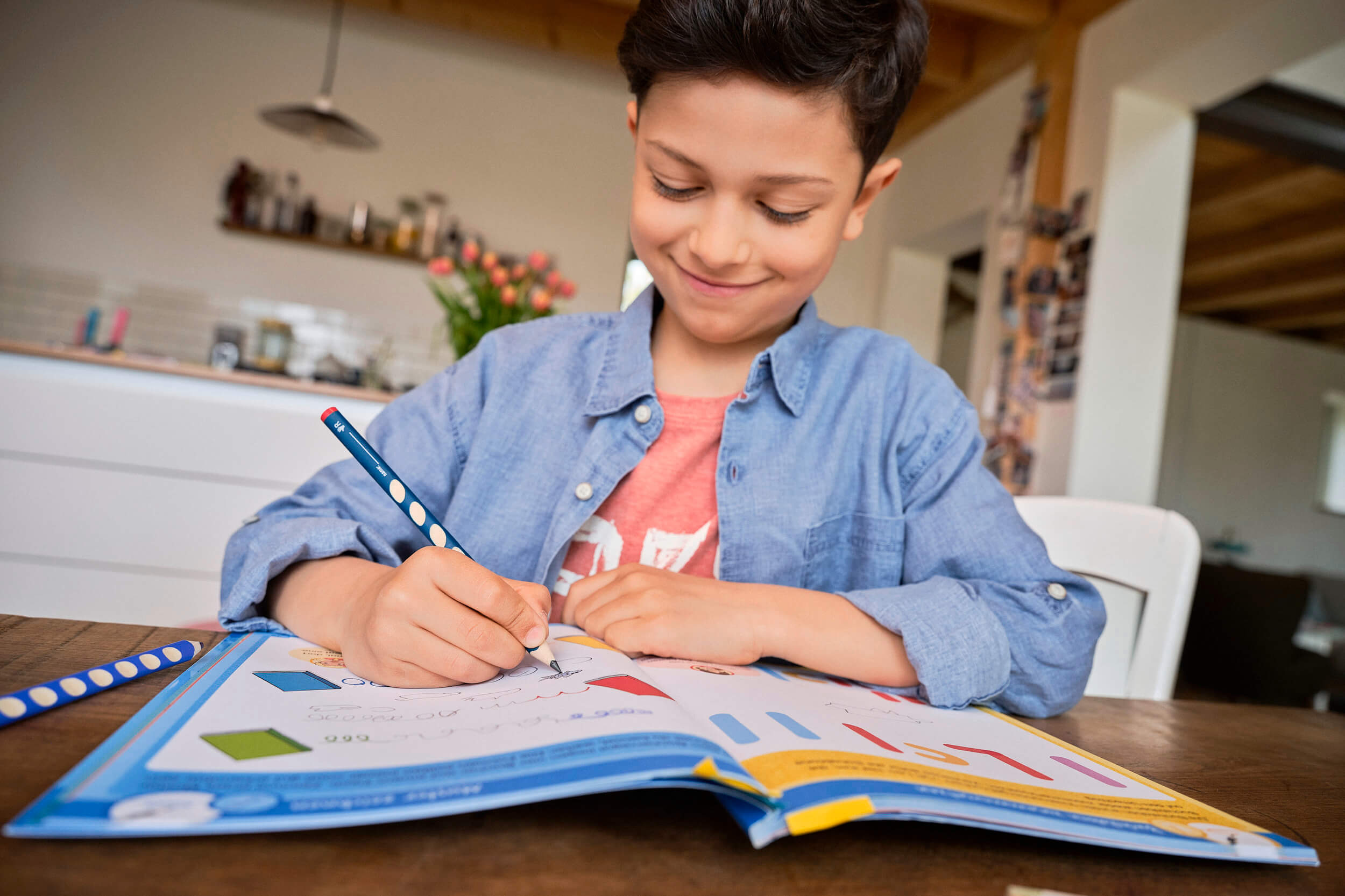With a pencil for KS1, it is important that the pencil can be used to write in a controlled and relaxed manner without exerting too much pressure. Otherwise, the hand will quickly become cramped and tired.
Non-slip grip zones that are adapted to the hand help to convey a feeling of control over the pencil. Thicker pencils also provide a better grip and make handling easier. Both help reduce pressure when writing and prevent muscle fatigue.
It is also important that the leads are break-proof so that children are not demotivated by constantly having to re-sharpen broken leads.
Good examples of school pencils for KS1 are the STABILO EASYgraph and STABILO EASYergo 3.15.
Thicker pencils give a better grip and are easier to handle. The thicker a pencil, the more grossly motorised its use can be. Conversely, thinner pencils require a higher degree of motor control and competence (comparable to the difference between a pin and a sewing needle).
Children therefore have less of a feeling of loss of control when writing with thicker pencils, which, when combined with non-slip grip zones, reduces pressure when writing and prevents muscle fatigue. The thicker lead that goes hand in hand with the pencil thickness also helps novice writers, as it writes more smoothly and breaks less often.
- Since hardness grades for pencils have not been standardised to date, it is difficult to give a clear answer. In general, the less automated the writing movements are, the less fluent and slower the writing is, the softer and thus easier the lead should be to glide. The most common hardness grade in Europe is the medium HB lead hardness, which is also often used in school pencils. However, softer leads such as B or (more rarely) 2B can also be found.
Product recommendations for:
Advice & Tips
Downloads
Responsibility





















